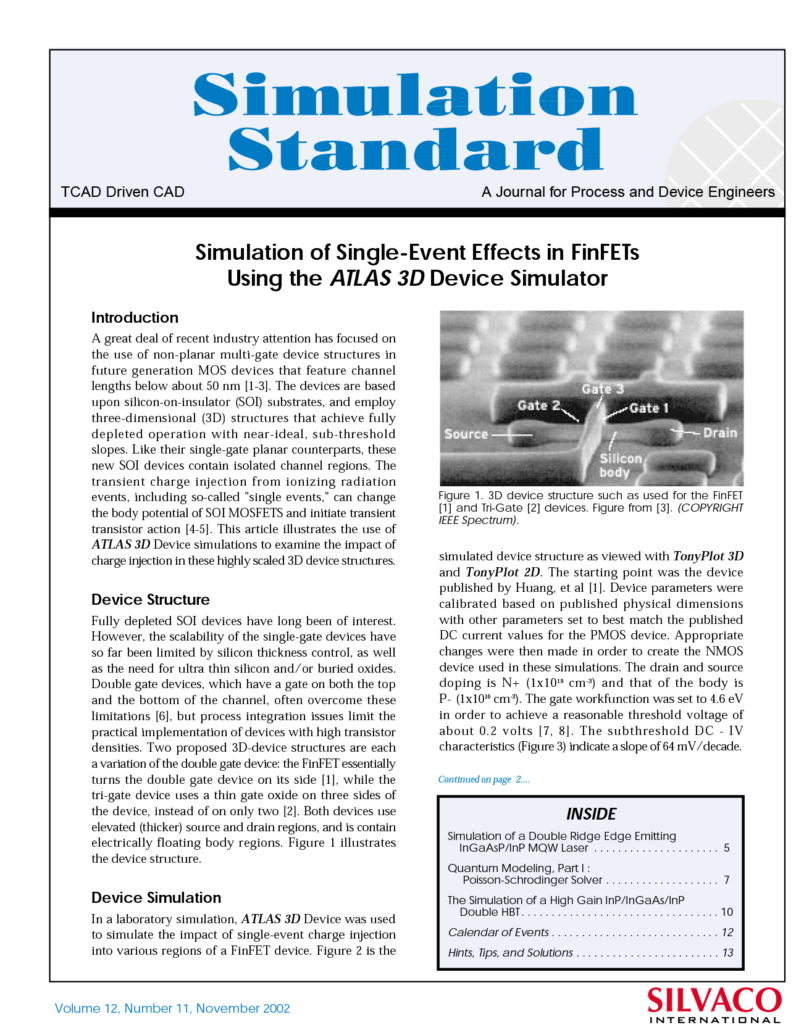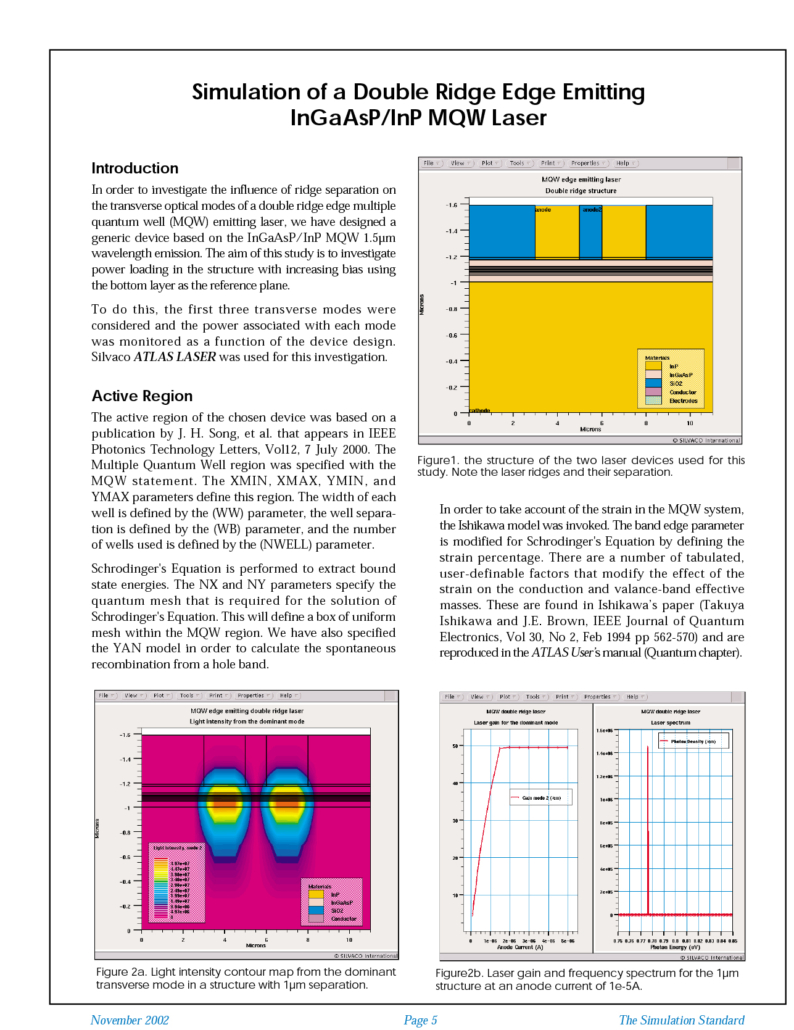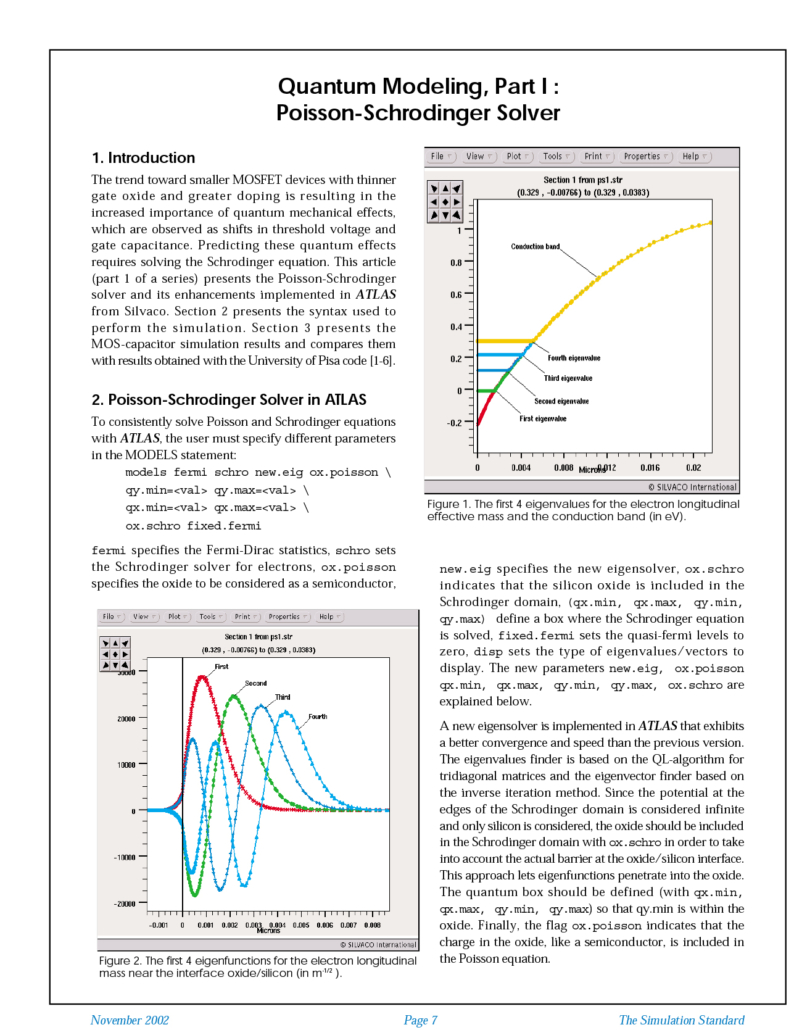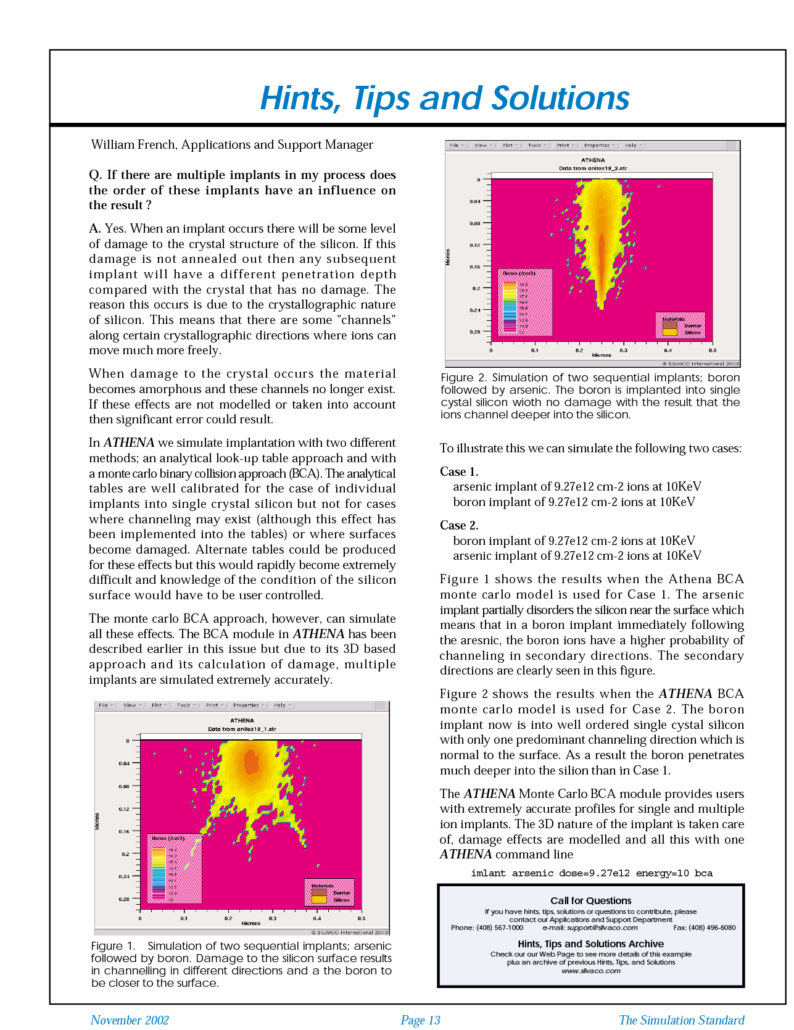Simulation Standard
Silvaco面向半导体工艺和器件仿真工程师推出的技术刊物

How does Snap-to-grid Works for Cell Instances
We have lots of cells that become off-grid when we do cut-and-paste from other cells. We tried to use the "Tools->Snap Selected to Grid" command, but the cell doesn't get moved at all. How does Snap to grid works for Instances? Does it work for Instances?

Simulation of Single-Event Effects in FinFETs Using the ATLAS Device Simulator
A great deal of recent industry attention has focused on the use of non-planar multi-gate device structures in future generation MOS devices that feature channel lengths below about 50 nm [1-3]. The devices are based upon silicon-on-insulator (SOI) substrates, and employ three-dimensional (3D) structures that achieve fully depleted operation with near-ideal, sub-threshold slopes. Like their single-gate planar counterparts, these new SOI devices contain isolated channel regions. The transient charge injection from ionizing radiation events, including so-called "single events," can change the body potential of SOI MOSFETS and initiate transient transistor action [4-5]. This article illustrates the use of ATLAS 3D Device simulations to examine the impact of charge injection in these highly scaled 3D device structures.

Simulation of a Double Ridge Edge Emitting InGaAsP/InP MQW Laser
In order to investigate the influence of ridge separation on the transverse optical modes of a double ridge edge multiple quantum well (MQW) emitting laser, we have designed a generic device based on the InGaAsP/InP MQW 1.5µm wavelength emission. The aim of this study is to investigate power loading in the structure with increasing bias using the bottom layer as the reference plane.

Quantum Modeling Part I: Poisson-Schrodinger Solver
The trend toward smaller MOSFET devices with thinner gate oxide and greater doping is resulting in the increased importance of quantum mechanical effects, which are observed as shifts in threshold voltage and gate capacitance. Predicting these quantum effects requires solving the Schrodinger equation. This article (part 1 of a series) presents the Poisson-Schrodinger solver and its enhancements implemented in ATLAS from Silvaco.

Simulation of a High Gain InP/InGaAs/InP Double HBT with Varying Doping Profile within ATLAS
It is possible to now create new heterojunction and double heterojunction bipolar transistors [2] utilizing junction layers made of different heterojunction semiconductor materials. Typically a heterojunction bipolar transistor (HBT) consists of a hetrojunction at the base-emitter junction and a homojunction at the base-collector junction. A double hetrojunction bipolar transistor (DHBT) is made of two heterojunctions, both at the base-emitter and at base-collector junctions.

Order of Multiple Implants in a Process Affects Results
When an implant occurs there will be some level of damage to the crystal structure of the silicon. If this damage is not annealed out then any subsequent implant will have a different penetration depth compared with the crystal that has no damage. The reason this occurs is due to the crystallographic nature of silicon. This means that there are some "channels" along certain crystallographic directions where ions can move much more freely.

